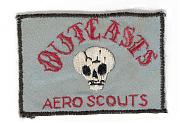Ratzel Said:Really good point. I think though, that the answer to the first question is that we were not much better than halfway trained for HIC in 2000. That is due to the fact that our obsolescent and really inefficient personnel system causes an annual rotation of 25-35% of all people in a unit -- so a really well trained unit at one point in time will degrade over the course of a year. That is reality."I suppose we can train for both, but this might make us halfway trained for both instead of highly trained for one? Procurement is even more cut and dry. Do we buy the next generation of tanks, or do we use that money in ways that enhances our nation building capabilities?"
That is also not as bad as it sounds; it is, in a word, good enough -- not great but good enough. That has almost always been true of all Armies. Long way of getting to the point that halfway trained for the full spectrum of warfare is acceptable. It's a lot better than being 90% trained for one form and then being confronted with another (See Iraq, 2003).
The answer to the second question is that, quite simply, outside of the Leopard 2A6, the M1A2 has no competition, therefor a new tank is not needed, merely continue to do some R and D. Which we are doing. So "that money" is or will be used to enhance our stability operations capability (see below).
Wilf said:True, though I think from what I read both are finally starting to realize that and are slowly changing; also see below."The USAF has dropped the ball badly in this area, as has the RAF. The cost versus "spectrum of effect" analysis has been totally lacking. Effectiveness has got to be balanced against efficiency, especially in Air warfare. It is far less critical in land and naval domains.
Eden said:Wilf's right, kudos for that. It often gets forgotten."So you can design an army for high-intensity warfare and still be comfortable that you will have at least some capacity for lesser contingencies.
Not so much for the really expensive parts of the armed forces. Yes, carrier battle groups and F-16 squadrons have utility in small wars - but if you are designing a Navy or an Air Force to support wars like Afghanistan or Iraq, and 'accepting risk' like Sec Gates says we are, the weapon systems you buy would look much different from the ones we are currently acquiring. You would want air frames, for example, designed almost solely to accurately deliver ordnance (or bags of food); air superiority would not be a consideration.
I agree but would point out that the HIC capability is critical to survival; the LIC capability is nice to have. It appears that many in the policy realm seem to think along that same line.
The cost of effective LIC systems is generally quite low (relatively speaking), so the diversion of only one Carrier Battle Group (for example) to oblivion would and will pay for both a few more spaces and possibly much equipment tailored for LIC. It is my perception that these trade-offs are being discussed and planned for implementation in the post 2014 period. The spending for the interim is already in place and there is no existential need to change it and Congress would likely not change it barring a major push by someone...A terrible truth. Also the driver of many more things than most realize. Congress is at the root of many perceived DoD-related problems...Force structure would be even more different. What is not commonly realized is that cost is less of a consideration in force structure than manpower. There is always more money available, but congressionally mandated manpower caps are much more difficult to move.
















Bookmarks